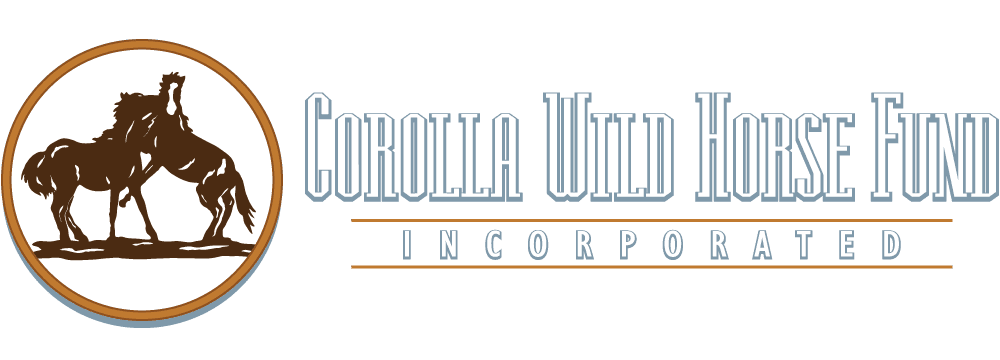The Geography and Horses of Coastal North Carolina
 Our little corner of the world has been getting a lot of attention recently, and it’s become clear to us that many people might not understand exactly how our coastline is laid out, and where the different herds of Colonial Spanish mustangs are in relation to each other.
Our little corner of the world has been getting a lot of attention recently, and it’s become clear to us that many people might not understand exactly how our coastline is laid out, and where the different herds of Colonial Spanish mustangs are in relation to each other.
On the map to the left, you’ll see a red X where there are currently herds of Banker horses living. The following post is a quick overview of the different habitats, herd sizes, managing organizations, and status post-Hurricane Florence. We encourage you to continue learning about these special horses by visiting the linked websites and supporting them in any way that you can!
The Corolla horses that CWHF manages in cooperation with Currituck County, the state of North Carolina, and US Fish and Wildlife, are located at the very top of the Outer Banks. The horses here have access to about 7500 acres of mixed-use land, and are contained by sound-to-sea barrier fences on both ends. To the south, the fence keeps the horses away from the dangerous paved Highway 12 and the more populated southern beaches like Duck and Kitty Hawk. To the north, the fence follows the state line and keeps the horses from entering False Cape State Park in Virginia Beach. The 100 horses are protected by a county ordinance, but there is no federal protection for them. Hurricane Florence had virtually no impact on this area, though early on we were prepared for a direct hit.
The Ocracoke ponies are managed by the National Park Service, and can be spotted in the 180-acre Pony Pen off of Highway 12. Until the late 1950s, the Ocracoke ponies roamed the island and were loosely managed by residents and the local Boy Scouts. Their history on the Outer Banks is storied, and the NPS is working hard to preserve and grow the herd of seventeen. You can read more about them here. The Park Service announced shortly after the hurricane that all of the Ocracoke ponies survived with no injuries and no damage to the Pony Pen and surrounding buildings.
There is a herd of Banker horses on Cedar Island, just south of Ocracoke. It is made up of horses from Ocracoke and Shackleford Banks that roam freely on private land. All 53 horses were accounted for after Hurricane Florence, and are doing just fine.
Shackleford Banks is the southern-most barrier island in Cape Lookout National Seashore. There are approximately 100 horses living on the 3000-acre island, only accessible by passenger ferry. The horses are managed cooperatively by the Cape Lookout National Seashore and the Foundation for Shackleford horses, and they are federally protected. Officials from the National Park Service and the Foundation for Shackleford Horses are in the process of doing a herd count, and while all horses have not been accounted for, the outlook for the herd is positive. You can find more information about the Shackleford horses here.
There are also horses living on the Rachel Carson Reserve, which is a series of islands right off Beaufort and adjacent to Cape Lookout. There are about 30 horses living there, and they are managed by the North Carolina Coastal Reserve. These horses are probably very closely related to the horses on the Shackleford Banks, though they have no interaction with each other now due to the formation of an inlet that separated the two areas in the 1930s. Managers from the Coastal Reserve announced recently that all 30 of these horses are present and accounted for since Hurricane Florence. You can learn more about them here.
So as you can see, the management of the Colonial Spanish mustangs of North Carolina is quite complicated. About 200 miles separates the herd at Corolla from the herd at Shackleford, so when Hurricane Florence dipped southward at the last minute, the Corolla horses were spared a direct hit while the horses south of here were more in the line of fire. We are all working together to make sure that each organization and herd has everything they need to recover from the storm as quickly as possible, but as you can imagine access to much of the habitat is quite difficult.
These horses are hardy and have survived on our special islands for many, many generations. We are quite sure they will survive for many more.




